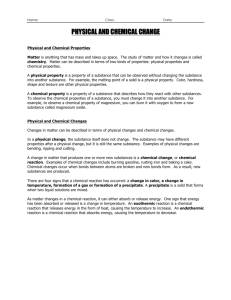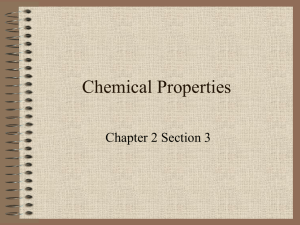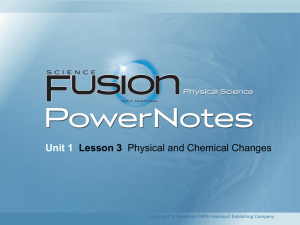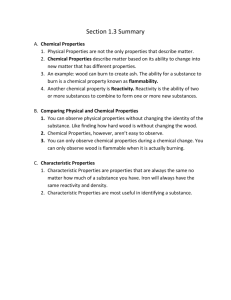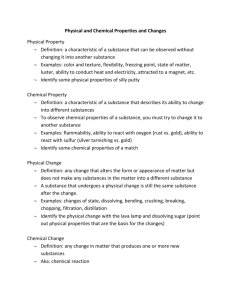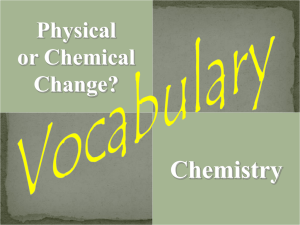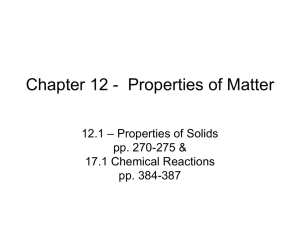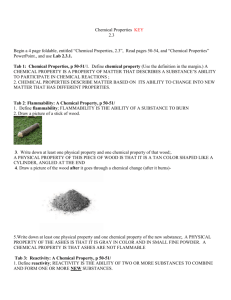Physical & Chemical Properties: Reaction Evidence
advertisement
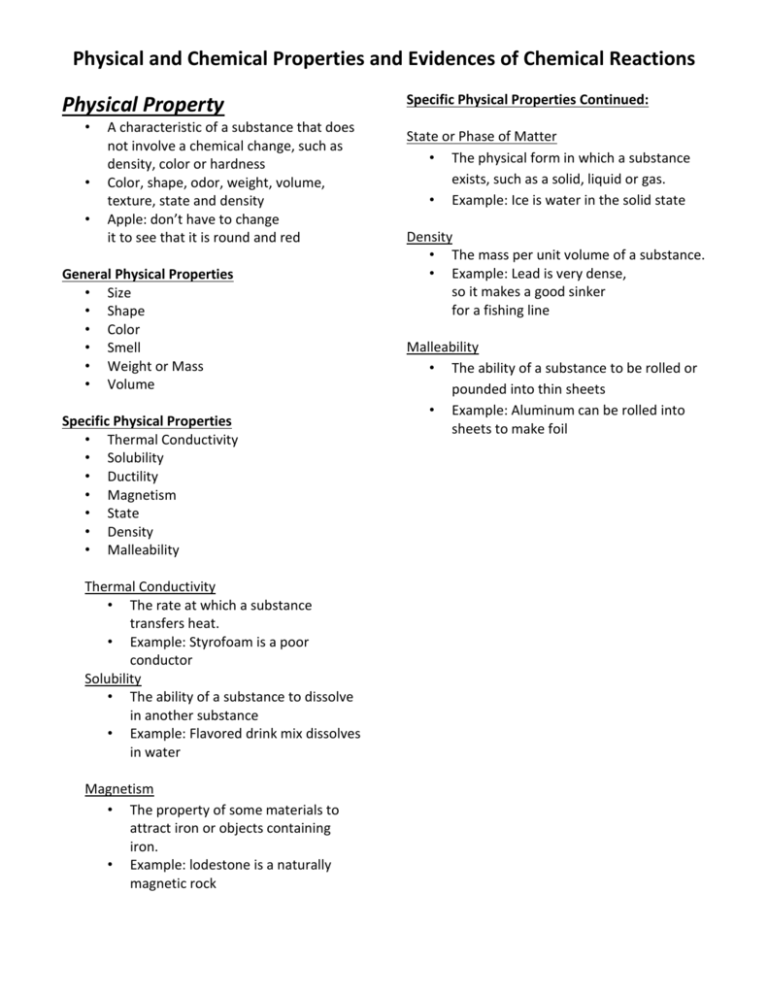
Physical and Chemical Properties and Evidences of Chemical Reactions Physical Property • • • A characteristic of a substance that does not involve a chemical change, such as density, color or hardness Color, shape, odor, weight, volume, texture, state and density Apple: don’t have to change it to see that it is round and red General Physical Properties • Size • Shape • Color • Smell • Weight or Mass • Volume Specific Physical Properties • Thermal Conductivity • Solubility • Ductility • Magnetism • State • Density • Malleability Thermal Conductivity • The rate at which a substance transfers heat. • Example: Styrofoam is a poor conductor Solubility • The ability of a substance to dissolve in another substance • Example: Flavored drink mix dissolves in water Magnetism • The property of some materials to attract iron or objects containing iron. • Example: lodestone is a naturally magnetic rock Specific Physical Properties Continued: State or Phase of Matter • The physical form in which a substance exists, such as a solid, liquid or gas. • Example: Ice is water in the solid state Density • The mass per unit volume of a substance. • Example: Lead is very dense, so it makes a good sinker for a fishing line Malleability • The ability of a substance to be rolled or pounded into thin sheets • Example: Aluminum can be rolled into sheets to make foil Physical and Chemical Properties and Evidences of Chemical Reactions Chemical Property • • Describes a substance’s ability to participate in chemical reactions Example: When wood is burned, ash and smoke are created. The new substances have very different properties than the original wood Specific Chemical Properties Flammability • The ability of a substance to burn. • Example: Wood has the property of flammability. However, ash and smoke can’t burn, so they have the chemical property of non-flammability. Reactivity • The ability of two or more substances to combine and form one or more new substances • Example: Metal + Oxygen = Rust Comparing Chemical and Physical Properties • Physical properties are easy to observe. You can measure the density or the hardness without changing anything. • Chemical properties are harder to observe. You can only see that wood is flammable when it is actually burning. BUT that piece of wood is still considered flammable even when it’s not burning. Evidences of a Chemical Reaction 1) Color Change o An usual color change can signal that a new substances has formed i. Example: blue + yellow liquid combined should turn green, a chemical reaction might make this turn red. o A color change does not always indicate a chemical reaction has occurred 2) A solid may appear (Precipitate) o A solid that form from solution during a chemical reaction is called a precipitate o The precipitate is a new/different substances and does not dissolve in the solution; it floats or sinks 3) A gas is produced o If the reaction occurs in liquid, you may see bubbles o Gas may or may not have an odor 4) Temperature Change o Increase or decrease in temperature is also an evidence of a chemical change o The heat would be generated from the energy from the reaction, not an external heat source 5) Irreversible o With a chemical reaction, the outcome is very difficult or impossible to reverse. o Example: Water can melt and go through several different state changes. It can be ice, water or steam and to move from one state to another it is frozen, melted or boiled. These are all easily reversible. In a chemical reaction there is a change to the chemical composition of the substances which is not so easy to reverse. Physical and Chemical Properties and Evidences of Chemical Reactions

